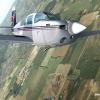Mooney down... KC, MO
-
Members Online
- Coachella Bravo
- Guy123
- EricJ
- MikeOH
- Jpravi8tor
- gabez
- Jake@BevanAviation
- ericrynehess
- Hank
- Rick Junkin
- Mikey30V
- Patrick Horan
- TheAv8r
- Skyland
- DCarlton
- Alan Maurer
- DXB
- 65MooneyPilot
- Rwsavory
- adverseyaw
- Jim F
- dzeleski
- LANCECASPER
- hammdo
- GeeBee
- TCC
- Marc_B
- PaulM
- tmo
- Blackroc
- CCAS
- markazzarito
- PeteMc
- markgrue
- eman1200
- Marcopolo
- teethdoc
- ta2too


Recommended Posts
Join the conversation
You can post now and register later. If you have an account, sign in now to post with your account.